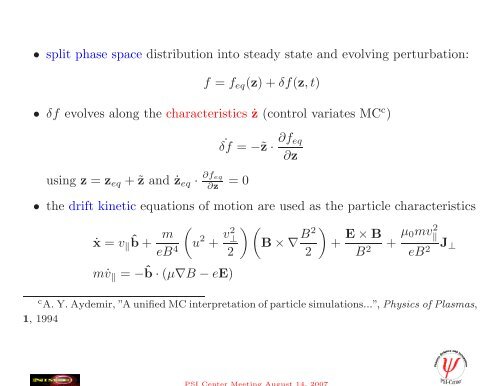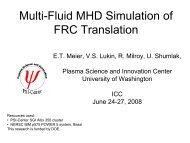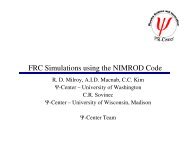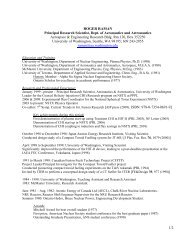Kinetic Particles
Kinetic Particles
Kinetic Particles
You also want an ePaper? Increase the reach of your titles
YUMPU automatically turns print PDFs into web optimized ePapers that Google loves.
• split phase space distribution into steady state and evolving perturbation:<br />
f = f eq (z) + δf(z, t)<br />
• δf evolves along the characteristics ż (control variates MC c )<br />
using z = z eq + ˜z and ż eq · ∂f eq<br />
∂z = 0<br />
˙ δf = −˜z · ∂f eq<br />
∂z<br />
• the drift kinetic equations of motion are used as the particle characteristics<br />
ẋ = v ‖ˆb + m (<br />
)<br />
eB 4 u 2 + v2 ⊥<br />
)(B × ∇ B2<br />
+ E × B<br />
2 2 B 2 + µ 0mv‖<br />
2<br />
eB 2 J ⊥<br />
m˙v ‖ = −ˆb · (µ∇B − eE)<br />
c A. Y. Aydemir, ”A unified MC interpretation of particle simulations...”, Physics of Plasmas,<br />
1, 1994







